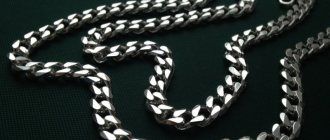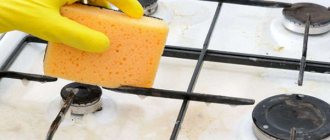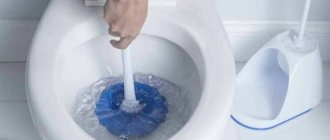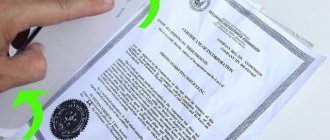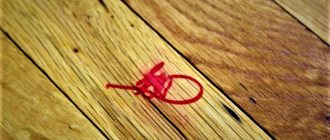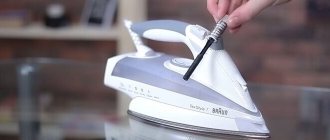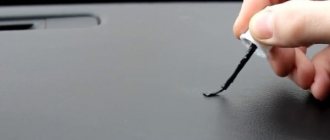Sugar and products made from it - cotton candy, jam or jam, sugaring paste and much more - have long and firmly entered our lives and are not going to leave it.
Situations may arise when, after heat treatment, it turns into hard-to-remove sugar deposits, causing housewives a lot of inconvenience. But don't despair: there are many ways to clean burnt caramel.
You just need to choose the appropriate method that will not damage your favorite baking sheet, oven surface, candy mold, popcorn or cotton candy maker. We will be happy to help you with this.
Burning of sugar is inevitable when preparing caramel popcorn in a machine, when making cotton candy, in some cases when making jam, jam, confetti, when preparing sweet pastries, when a viscous sticky mass spoils not only the dishes, but also the stove or oven.
If the pan can still be thrown away, then the oven needs to be washed, otherwise subsequent cooking in it will cause smoke.
It is not easy to clean such deposits - there are many effective methods that, unknowingly, will clean not only the deposits, but also the top coating of the dishes. To prevent this from happening, you should carefully consider the choice of cleaning method.
Cleaning with household chemicals
Store-bought cleaning products for stoves, ovens and pots always contain surfactants - surfactants that reduce the adhesion of burnt foods to the surface.
The simplest surfactant is laundry soap. Depending on the manufacturer, abrasives are often added to such products - hard particles whose task is to scrape off dirt from the surface.
Therefore, you should choose the product wisely: enameled surfaces, Teflon coatings and stainless steel do not tolerate abrasive cleaning, unlike cast iron or aluminum.
The cleaning method, at first glance, is simple: you need to apply the selected product in pure form or mixed with water to the carbon deposits and leave for a while, then try to wash off the burnt caramel with a sponge.
Why try? Because even potent remedies will not cope with burnt sugar the first time. Therefore, the best option is to combine the work of a surfactant with boiling: this will speed up the process significantly.
Pour a little cleaning product into the affected pan, add water to the edges of the pan and boil this mixture for 30-40 minutes. After cooling, all the carbon deposits will peel off from the bottom of the pan.
If the outer part of an enamel pan or baking sheet is covered in sugar, you should place them in a larger container and do the same.
Traces of fresh caramel
It is much easier to remove any remaining caramel from the bottom of the pan while the sweet mixture is still hot and has not had time to burn too much. A thin layer of caramel can be removed with a kitchen spatula; a thick layer must be soaked in boiling water or soapy water.
To make the cleaning process easier, soak the dishes in hot or sparkling water.
Acid cleaning
An acidic environment is great for removing carbon deposits from the walls of the cookware.
To do this, you need to immerse the burnt container in a large vat, if the contamination is external, or fill it with water, adding a couple of tablespoons of citric acid, a quarter glass of lemon juice or 9% table vinegar.
Leave the candy mold, baking sheet or pan to soak overnight or for at least 5 hours. If soaking does not give the desired result, boil the damaged dishes in the same solution, then remove everything that is burnt.
This method is suitable for any type of cookware used.
Removing the burnt inside: sequence of actions
Tableware enamel requires special treatment. Therefore, before directly cleaning a burnt pan, you need to perform the following steps:
- The fight against carbon deposits cannot be postponed until later. Otherwise, it will be extremely difficult to wash it completely. Therefore, as soon as the pan is burnt, the dish must be placed in another dish; this can be done at any stage of cooking.
- Determine the type of coverage. If it is glossy, then you can start resuscitating it immediately. If it is matte, then the container should be cooled first. Glossy enamel is more durable and easily tolerates temperature changes. For a matte finish, a sudden change in temperature is detrimental.
- You should not try to clean the carbon deposits without soaking. An ordinary sponge will not do this, and metal dish brushes will damage even the most durable enamel. At first, barely noticeable scratches will appear on it, then cracks, and then chips. The soot is generously sprinkled with table salt, soda or filled with dishwashing gel, pour a little hot water into the container and wait for several hours (preferably 8-10).
- When the specified time has elapsed, boil the solution of salt, soda or gel for about a quarter of an hour, cool and clean the container from sticking with a foam sponge. If the desired effect cannot be achieved, additional cleaners will be required.
We invite you to familiarize yourself with the fight against mites on a home rose
Cleaning with salt
If you don’t have any cleaning products on hand, regular salt will work great for cleaning dishes from sugar deposits. The cooled baking sheet needs to be filled with cold water for an hour to soak, then the water should be drained and salt should be generously applied to the soot.
After two to three hours, burnt sugar can be easily washed off with a regular sponge. Caution : this method is not suitable for stainless steel cookware as it may cause stains and darkening of the surface.
Burnt sugar
It is necessary to get rid of the remnants of burnt sugar immediately, without delay, before the remnants have yet caramelized. Be sure to fill the pan with boiling water so that the carbon deposits are completely covered with water. After three hours, the burnt sugar will dissolve and settle to the bottom.
The pan should be cleaned of any fresh traces of jam or sugar immediately.
Cleaning with soda, laundry soap and silicate glue
Yes, such indigestible, at first glance, components work no worse than imported cleaning products - tested by our grandmothers!
However, there are also contraindications: it is better not to clean Teflon frying pans or baking sheets with an outer coating in this way - this can render them unusable.
To clean everything else, you will need grated laundry soap (80 g), 100 g of silicate glue and three liters of water.
This wild mixture is poured into a burnt dish or large container where this dish will be placed, and placed on the fire. Half an hour of boiling, and not only the caramel will leave your pan, but also all the stubborn fat.
Cleaning with activated carbon
A universal adsorbent, which is usually found in a home medicine cabinet, will help remove sugar deposits from different types of dishes.
Activated carbon cleaning is suitable for pots made of any material.
- The tablets must be crushed to a homogeneous powder.
- Dilute with warm water. The mass should not be too liquid.
- Apply a layer of sugar caramel to the burnt layer and let it sit for half an hour.
- Rinse with warm water.
Activated carbon is a safe way to clean kitchenware.
Cleaning with dry mustard and coffee
Before the invention of shampoos, mustard was actively used for washing hair - it contains natural surfactants. To clean soot with mustard powder, you need to dilute it with hot water to a mushy state, apply it to the burnt area, leave it for a while, and then simply remove it along with the soot.
Despite the abrasiveness of mustard powder, this method does not injure the top coatings of dishes at all and is absolutely safe for cleaning Teflon, enameled surfaces, stainless steel and aluminum, which cannot be said about coffee.
To clean carbon deposits, squeeze or grounds are used in the same way as mustard.
Cleaning depending on the pan material
Household chemicals and methods for cleaning burnt sugar must be selected depending on the material from which the pan is made. While cleaning with a wire brush is suitable for aluminum cookware, this method is unacceptable for enamel or Teflon cookware.
You just need to choose the appropriate method that will not damage the surface.
Enamel pan
When removing sugar deposits from such dishes, you should not use a metal scraper, as this may damage the coating. Then, during the cooking process, food will constantly stick to the burnt area. stick to the damaged area, and the enamel can peel off and get into cooked food.
Cleaning enamel pans requires a delicate approach.
When learning tips on how to remove burnt sugar from an enamel pan, keep in mind that enamel dishes should not be suddenly filled with cold water, since a temperature difference can lead to peeling of the enamel.
ATTENTION! Fresh apple peels will help with cleaning an enamel pan. It contains acid, which dissolves the burnt layer of sweet mass.
Fresh apple peels will help you clean your enamel pan.
Stainless steel pans
Cookware made of stainless steel looks elegant and expensive. But it is prohibited to clean the surface of stainless steel pans with any abrasive means. Otherwise, not only appearance, but also functionality will be lost. Food in such dishes will begin to burn.
The best way to clean stainless steel is with a soap solution.
Aluminum pans
It is necessary to wash off burnt caramel from aluminum cookware without abrasive or caustic agents. Otherwise, damage may contribute to the release of harmful impurities into cooked food. You can clean sugar deposits from an aluminum pan using soda, laundry soap or acetic acid.
The method of cleaning a pan from burnt sugar depends on the material of the kitchen utensil.
Cotton candy production machine
Remember how happy it was when you bought a big stick of cotton candy? During its production, caramel deposits are also formed.
The apparatus for producing cotton wool is not a pan or a baking tray; boiling it in one of the solutions will not work. However, this is not a reason not to clean it.
The first step is to unplug the cotton candy production machine for cleaning, then disassemble the head and separate the heating element and diffuser.
The device itself must first be cleaned with a dry brush to remove any remaining cotton wool and pieces of caramel, then wiped with a damp cloth, and the removable elements can be washed with running water.
Preventative measures for sugar burning
You can avoid burning sugar or caramel during the preparation of jam, preserves or marmalade by continuously stirring the sweet mass and cooking over low heat. The jam should only be stirred with a wooden spoon or spatula. Metal will scratch the bottom of the pan, which will promote burning. If, nevertheless, the jam begins to burn, you need to pour it into another container, and immediately fill the burnt pan with water or soda.
The carbon dioxide contained in the drink destroys the burnt layer of sugar. It will be much easier to wash off carbon deposits after soaking for half an hour in carbonated water.
How to clean a badly burnt aluminum pan?
To clean, follow these steps:
- Fill the burnt pan
with water. - Add a few tablespoons of soda there.
- Place on fire and boil for 20–30 minutes. After this, even stubborn stains will easily come off by washing the back of the washcloth.
Interesting materials:
Can children watch cartoons? Can children take Cerucal in tablets? Can children have cerucal? Can children use Viferon for prevention? Can children watch cartoons? Can children take adult glycerin suppositories? Is Detrimax suitable for children? Can the doctor help my children? Is it possible to travel on a train with someone else's child? Can granola be given to children?
Radical methods for cleaning a burnt saucepan
- Let's take 6% table vinegar (you can use any - wine, apple or rice);
- Pour it over the “affected” areas of the pan;
- Leave the vinegar in the bowl for 3-4 hours, during which time it will be able to cope with burnt sweets;
- Wash the pan using detergents.
If the burn is not only inside the pan, but also outside, you need to make a “soda bath” - place a bowl with sugar burn in a larger pan, pour the soda solution 2 cm above the smaller pan (for 6 liters of water - 1 pack of baking soda) , boil for 2 hours, let the pans cool and wash off the burnt marks.
How to remove burnt marks from cast iron cookware?
Cleaning cast iron surfaces should be done while they are still warm. To eliminate sugar, you can use a saline solution (50 grams of salt per 1 liter of warm water). Cast iron is not a fastidious metal and does not require special care, so you can remove residual sugar with a wire brush and various alkalis (citric acid and vinegar). You can also use dishwashing powder to remove burnt sugar. The most popular of them:
- Comet.
- Fairy.
- Gala.
- Forte+.
Important! If harsh chemicals are used, you need to take care of your skin by using rubber gloves.
Recommendations for caring for aluminum cookware
A newly purchased aluminum pan requires preliminary preparation before use. First of all, it is necessary to clean it of industrial lubricants. To do this, simply wash it with a sponge and soap and rinse thoroughly. Next you need to heat the pan. After this procedure, a film of aluminum oxide salts is created on the inner surface. It is a protection against further oxidation of the walls and a barrier to harmful compounds that can get into food.
The calcination process consists of several stages:
- rinse and dry the pan thoroughly;
- pour sunflower oil into the bottom;
- add 1 tbsp. l. table salt;
- heat on the stove for 3–5 minutes until the smell of hot oil appears;
- wait until the pan cools down and wash with a sponge and soap.
Preparing an aluminum pan for use - video
The appearance and service life of aluminum cookware depends on daily care. You need to wash it correctly:
- the pan must cool to room temperature, only then can it be washed;
- Immediately soak burnt food on the bottom in warm water with detergent for more than an hour, after which it can be washed off more easily;
- Wash the pan by hand without using a dishwasher. Exposure to hot water may cause cookware to warp;
- use a soft sponge for washing;
- Rinse off the detergent thoroughly.
Basic rules for using aluminum pans
Following simple rules helps to preserve the appearance and functional qualities of aluminum cookware longer.
Before first use, the pan must be heated. Do not cook in aluminum cookware every day, especially dairy dishes and sour soups. Transfer the cooked dishes to another container. Contact with food causes dark spots to appear on the surface of the pan. The food itself acquires an unpleasant metallic taste. Such dishes are not suitable for pickles and starters. As a result of the interaction of aluminum and acids, substances harmful to health are formed. Carry out the cooking process over low heat to prevent scale formation. Use wooden, plastic or silicone spatulas that will not scratch the interior surface. Stir food frequently during cooking to prevent burning.
Almost all methods of cleaning aluminum pans require time and care. However, any housewife can find at least one product in her kitchen that can cope with stains.
Follow the basic rules for caring for such utensils, be more attentive to your kitchen assistants, then they will last you longer!
Source
